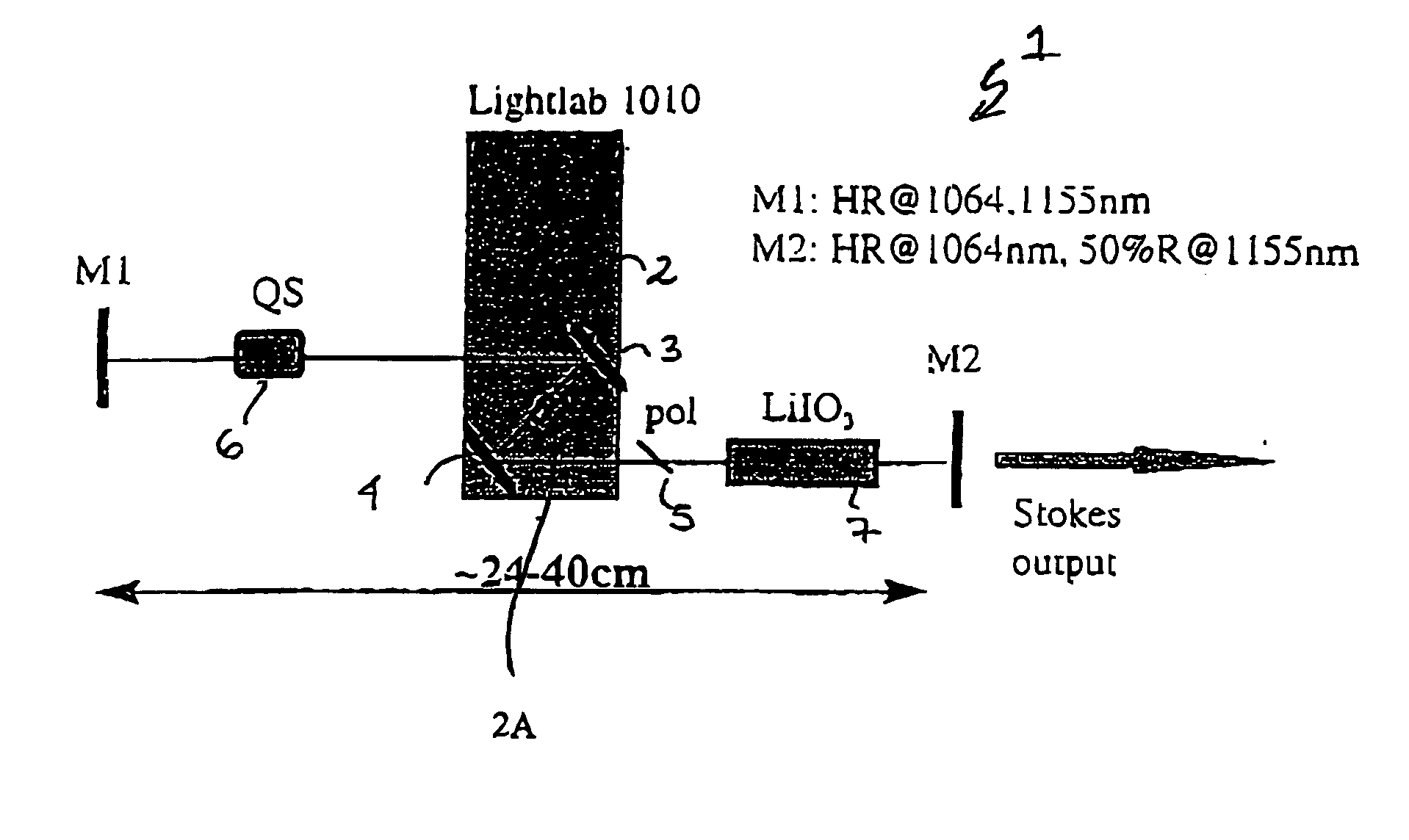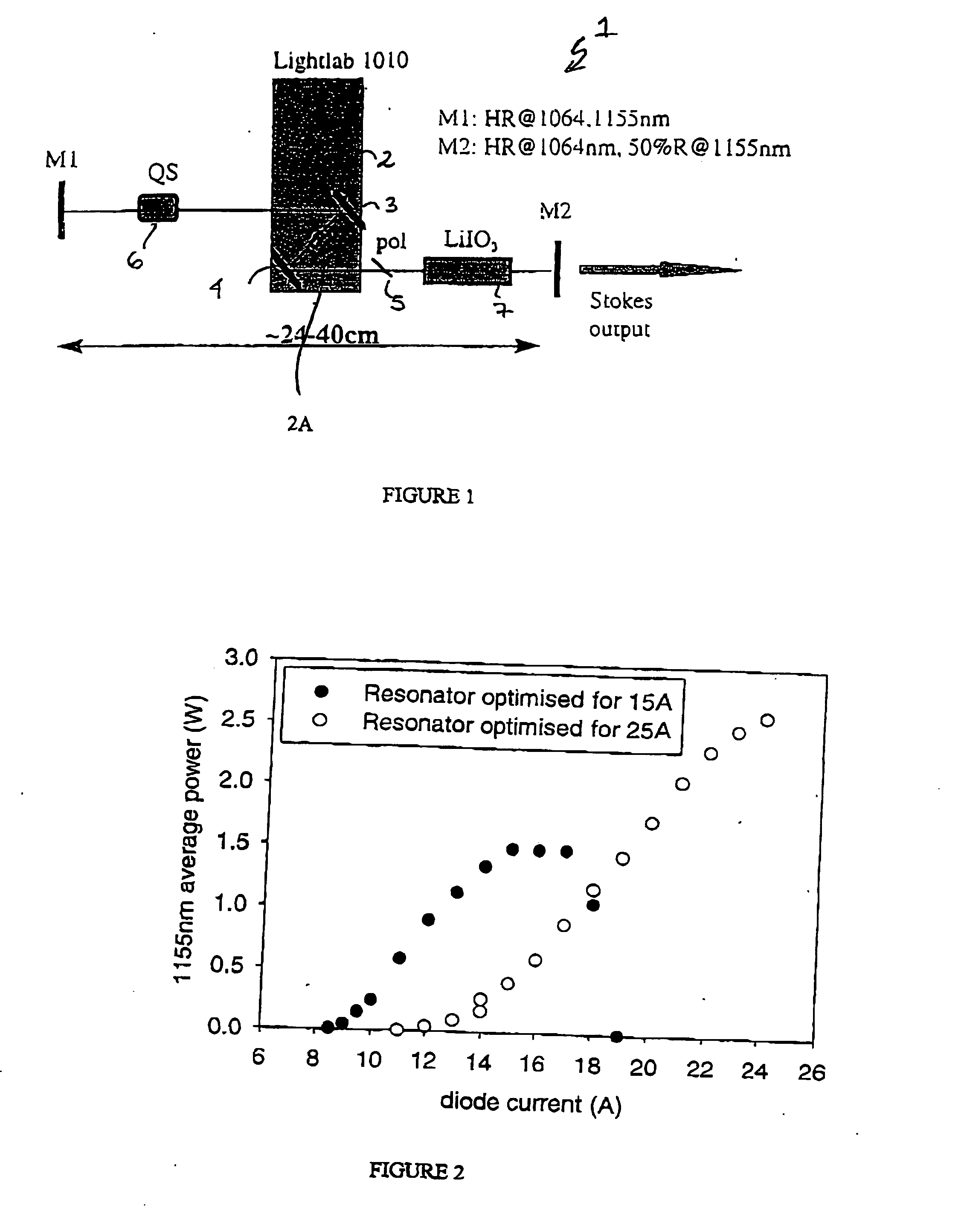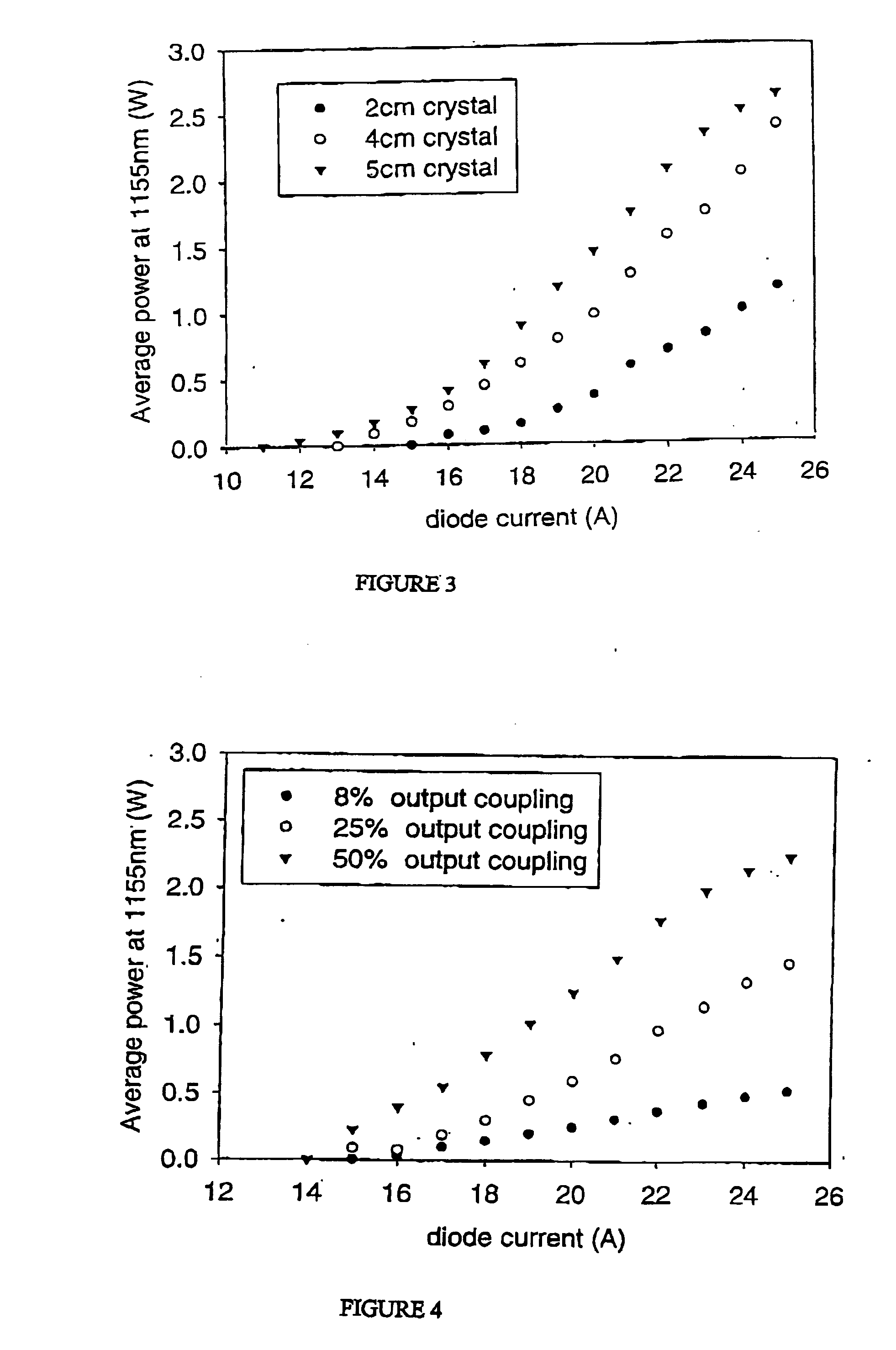Stable solid state raman laser and method of operating same
a solid-state raman laser and stable technology, applied in the direction of laser details, optical resonator shape and construction, instruments, etc., can solve the problems of power drift, difficult to design solid-state raman lasers, complex design and operation, etc., to limit the scalability of end-pumped raman lasers, the effect of high gain and efficient approach
- Summary
- Abstract
- Description
- Claims
- Application Information
AI Technical Summary
Benefits of technology
Problems solved by technology
Method used
Image
Examples
experiment 1
[0112] A 34 cm long cavity with a 30 cm radius of curvature high reflector, M1, a flat output coupler, M2, with near-optimum transmission at the fundamental of 12% and an aperture (750 .mu.m diameter) to confine oscillation to the TEM.sub.00 mode was used (for diode currents up to 18A the fundamental beam profile is generally singly moded and fairly free of aberration, as the diode current is increased however the fundamental profile generally becomes strongly aberrated and may consist of several transverse modes however the Stokes output almost always occurs in a single traverse mode (TEM.sub.00) indicating Raman beam-cleanup). The output power at 1064 nm was in the range 5.5-6.6W at the maximum diode operating current (25A) depending on the exact Q-switch repetition frequency. The optimally-coupled conditions at 1064 nm in this experiment provide the optimum performance baseline to which the output from the Raman laser is compared in order to evaluate optical to optical conversion...
experiment 2
[0114] The Raman resonator cavities were optimised for the highest Stokes output at a specific diode current. The optimisation was basically empirical, a variety of resonators were evaluated using a variety of combinations of cavity lengths, mirror curvatures, output couplings and positioning of the key cavity elements. FIG. 2 shows the measured output power of the Raman laser at approximately 1155 nm using two separate cavity configurations optimised for operation at 15A and 25A diode current. In both cases a 5 cm length of LiIO.sub.3 was used.
[0115] The first resonator configuration optimised at 15A incorporated two flat end mirrors, the high reflectivity minor was placed 9.5 cm and the output coupler (50% transmitting) placed 12 cm from the centre of the pump module. A maximum power of 1.45W at 1155 nm was obtained at 10 kHz corresponding to a conversion efficiency of 57% (78% accounting for collection efficiency) with respect to the base laser performance at 1064 nm (2.6W). As t...
experiment 3
[0119] A number of Raman Laser parameters were studied. A resonator was used consisting of a 30 cm concave highly reflecting mirror placed about 25 cm from the centre of the pump module and a flat output coupler placed 8 cm from the pump module. The LiIO.sub.3 was placed close to the pump module where the resonator mode was largest (approximately 320 .mu.m). A maximum output of 2.3W at a first Stokes wavelength was obtained with this cavity configuration slightly lower than for the 25A resonator of Experiment 2 but with a far lower incidence of crystal damage.
[0120] In FIG. 3 the average power of the first Stokes wavelength as a function of diode current for crystal lengths 2, 4 and 5 cm was studied. Te pulse repetition frequency was 15 kHz and a 50% transmitting output coupler was used. Higher output powers were achieved with longer crystals as expected since Raman gain coefficient is proportional to the length of the Raman gain medium. The output at 1155 nm obtained using the 4 cm...
PUM
| Property | Measurement | Unit |
|---|---|---|
| wavelength | aaaaa | aaaaa |
| wavelength | aaaaa | aaaaa |
| wavelength | aaaaa | aaaaa |
Abstract
Description
Claims
Application Information
 Login to View More
Login to View More - R&D
- Intellectual Property
- Life Sciences
- Materials
- Tech Scout
- Unparalleled Data Quality
- Higher Quality Content
- 60% Fewer Hallucinations
Browse by: Latest US Patents, China's latest patents, Technical Efficacy Thesaurus, Application Domain, Technology Topic, Popular Technical Reports.
© 2025 PatSnap. All rights reserved.Legal|Privacy policy|Modern Slavery Act Transparency Statement|Sitemap|About US| Contact US: help@patsnap.com



